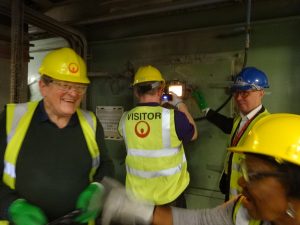Read more
In August I travelled out to Lund to meet up with Jenny Palm to start to figure out how we would deliver the ten walking tours that are at the heart of the project. We plan to focus specifically on heat as the most prominent use of energy in the daily lives of those living in Sweden and the UK and we’ll use the walking tours to trace the routes of district heating pipelines to their sources: the power stations burning waste, gas, coal or other fuels to produce our heat and energy.
On arrival in 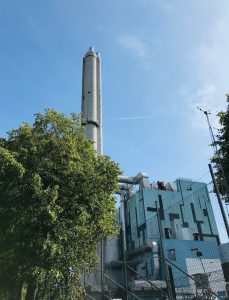 Lund on a lovely summer’s day, I was amused to find the city’s district heating pipework laid bare virtually outside my hotel window. All this just for me? A large trench had been dug down the centre of Lund’s main shopping street and the large black insulated pipes that form the basis of the city’s heat network were proudly on display. This was presumably as a result of the essential maintenance that often takes place during the warmer summer period when there is little or no heat demand. The city was quiet but I witnessed a fair few people pass these trenches- which restricted movement along the high street considerably- and not so much as glance at them.
Lund on a lovely summer’s day, I was amused to find the city’s district heating pipework laid bare virtually outside my hotel window. All this just for me? A large trench had been dug down the centre of Lund’s main shopping street and the large black insulated pipes that form the basis of the city’s heat network were proudly on display. This was presumably as a result of the essential maintenance that often takes place during the warmer summer period when there is little or no heat demand. The city was quiet but I witnessed a fair few people pass these trenches- which restricted movement along the high street considerably- and not so much as glance at them.
I contrasted this with a recent incident in Sheffield where a burst district heating pipe caused steam to spray up through the tarmac and gave rise to all sorts of weird and wonderful theories about what was going on. Before I had even noticed the leak myself, I was accosted by a woman who told me to turn back as the road was on fire. Intrigued, I pushed ahead with my planned route, despite this apocalyptic warning. As I approached the steaming hole in the road, I received a further warning to steer clear of the gas leak. As far-fetched as both explanations seemed, I was reassured by the curiosity expressed by these passers-by. It was clear that – as is the premise of the Walking with Energy project – their awareness of the energy infrastructure beneath their feet was very limited; giving rise to their imaginative theories and fuelling their intrigue.
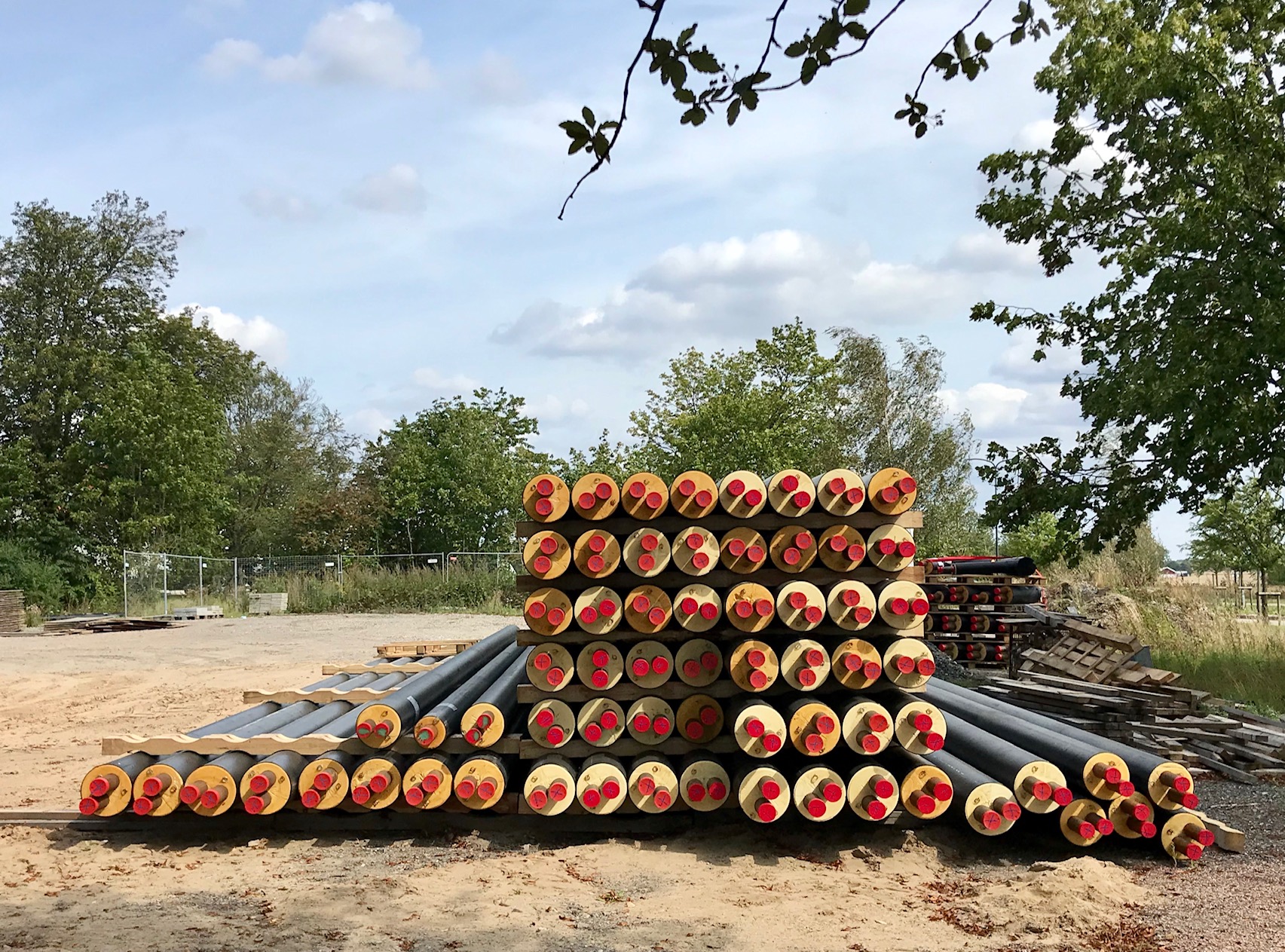
District heating is still a rarity in the UK but is very common in Sweden and the summer maintenance work has probably become a familiar sight perhaps to the point where it goes unnoticed and unquestioned. Indeed, anecdotes that I picked up on whilst in Sweden suggest that despite being a cold country during winter, heat is not something Swedes think a great deal about. It is affordable to just about everyone, is often included in the rent, is generated miles from the home and transported via a network of underground pipes which cannot be seen (except perhaps when it snows and the snow melts along the pipeline). It seems curious to me that people often seek out alternative explanations for heat infrastructure when it becomes visible; seemingly wanting to bring it in line with things they understand. This phenomenon is exemplified by the well-established myths that exist in relation to New York’s famous steaming streets which are widely attributed to sewerage systems and never to the city’s long established steam heating system.
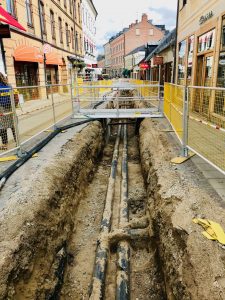
So, how do we get people living in Sweden curious about the heat they take for granted? This is what Jenny and I started to try and figure out. Our mission to find fascinating foci for our programme of walks took us on protracted walks around Lund and Malmo which resulted, for me, in the biggest blisters I’ve ever experienced. We clocked up 30km one day exploring the massive urban extension to Lund (Brunnshog) where low temperature district heating systems and district heated tram stops are being trialled. There we found many more trenches laced with heat pipes and huge piles of pipework ready to be installed. A large research facility lays on the edge of Brunnshog; it contains a vast particle collider and looks like an alien spacecraft landed amongst the fields. Soon it will be enveloped by the new town. We decided that one of our walks would focus on the innovative new systems at Brunnshog.
Next we took a train to Malmö and explored the neighbourhood of Sofialunds- a relatively deprived neighbourhood with a substantial migrant community. Clearly visible from Sofialunds is an imposing gas power station operated by EoN. Fossil fuelled power stations are considered fairly controversial in Sweden these days and so this relatively new facility will be decommissioned in the near future – what a great focus for a debate about Sweden’s energy future….we had identified the focus for our second event!
Our planning culminated at the University of Lund where we descended into the basement of the very grand baroque home of the International Institute for Industrial Environmental Economics (IIIEE). Here we planned an event which involved tracing the district heating pipeline around the campus and viewing its entry into the building via the basement. This will form the basis of our first event which will take place as part of Lund University’s Future Week on 17th October 2019, facilitated by Jenny and Steve. More on this soon….
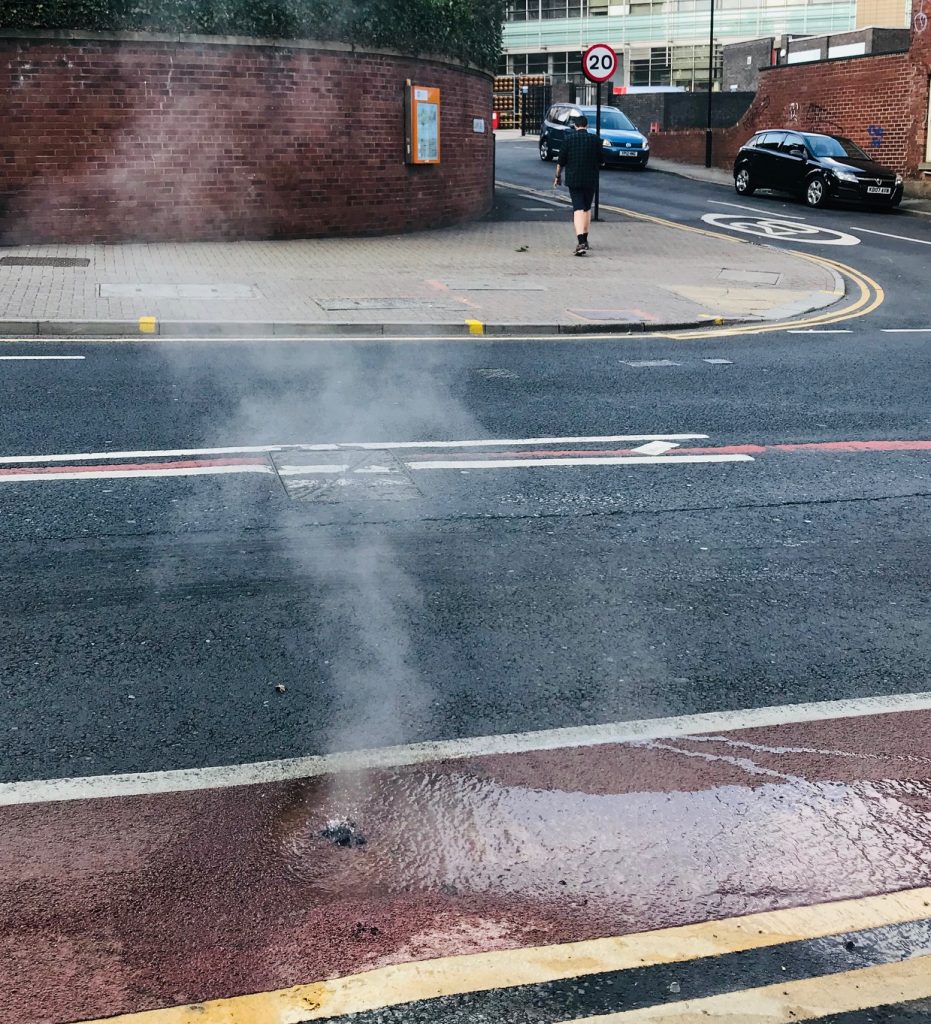
Back in the UK, we’ve been working with our psychologist Martin on developing the Implicit Association Tests that will we will be incorporating into the events to measure the impact of Walking with Energy on implicit attitudes towards energy and environmental issues – helping us assess whether first hand encounters with energy can make us better environmental citizens? Watch this space…
Written by Aimee Ambrose

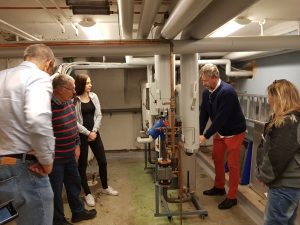

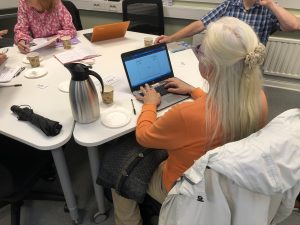

 Lu
Lu


